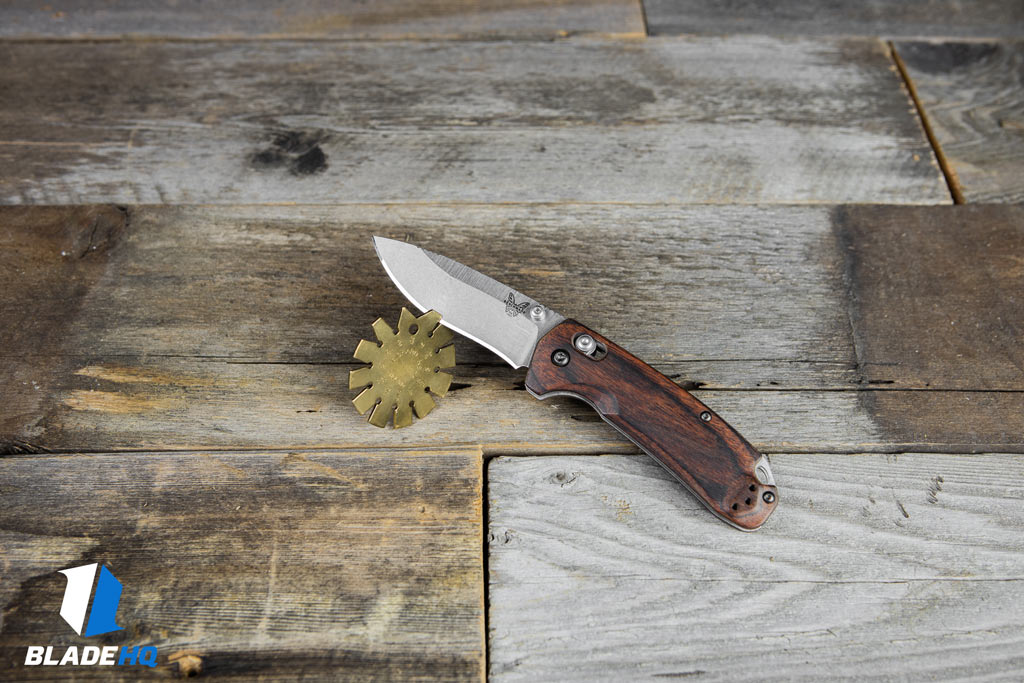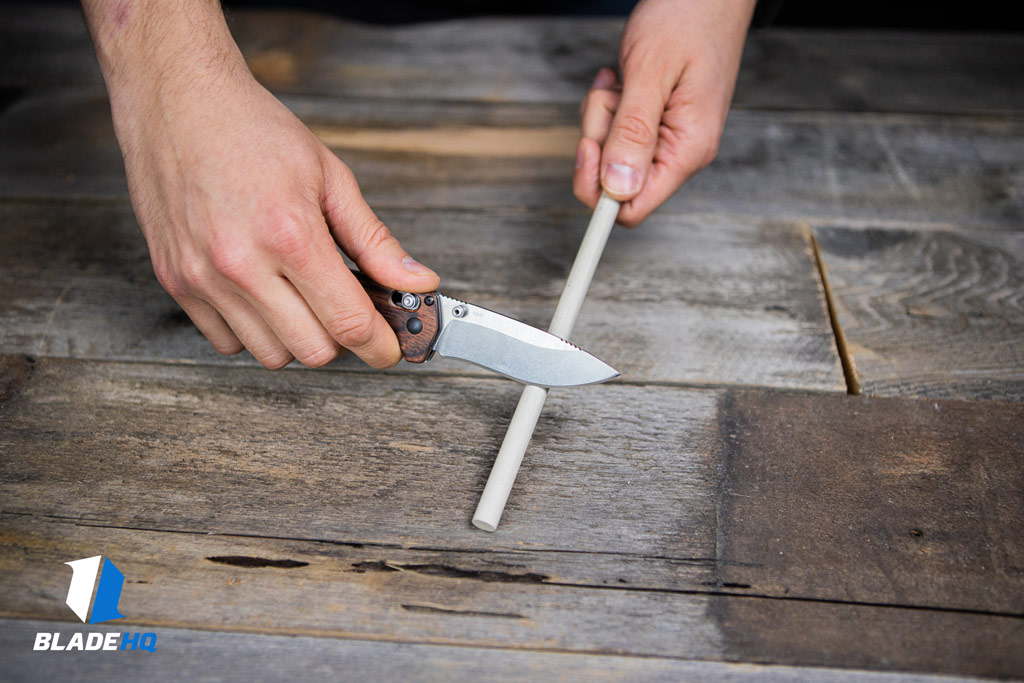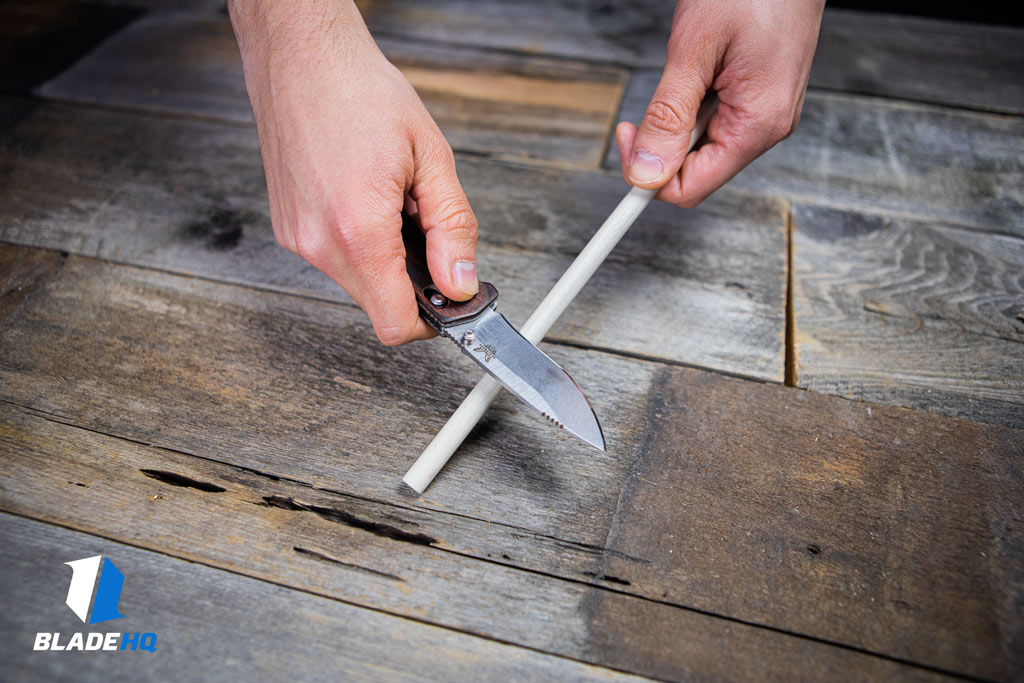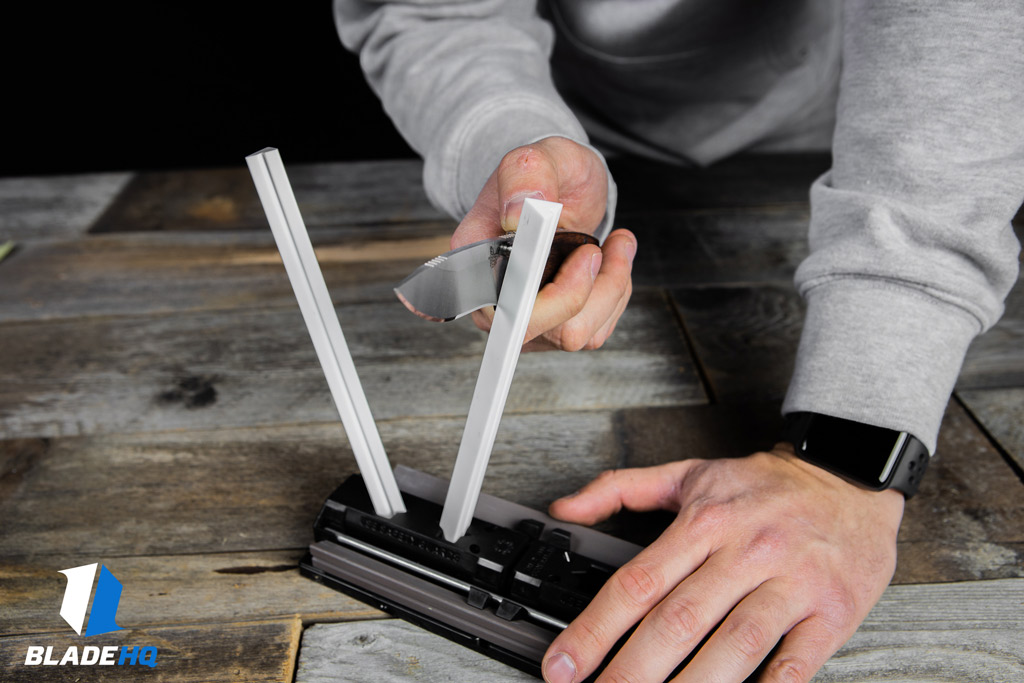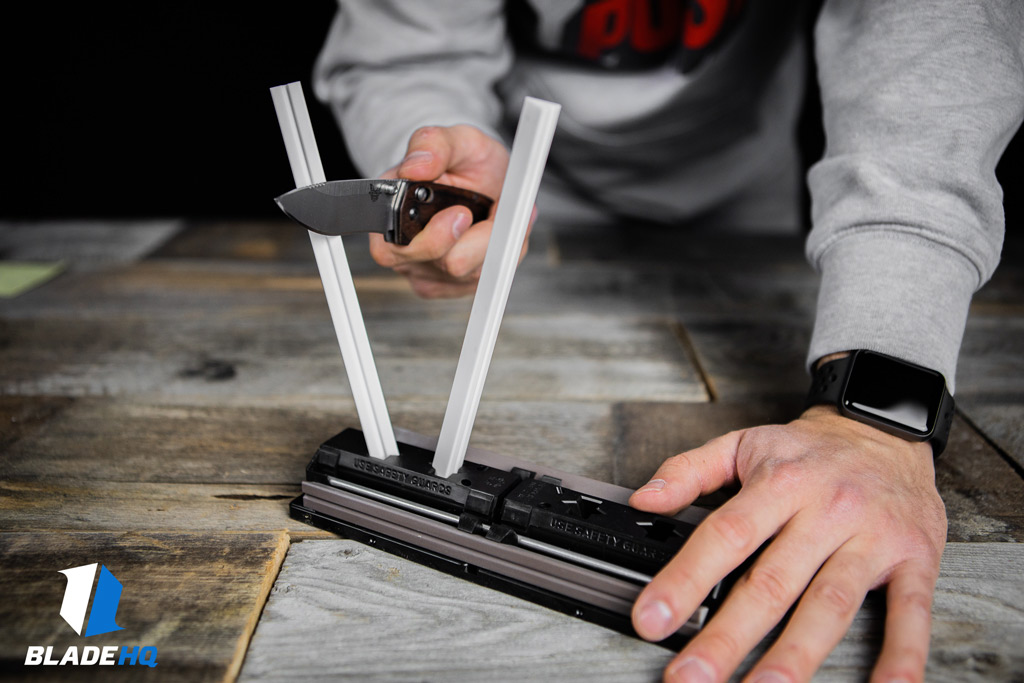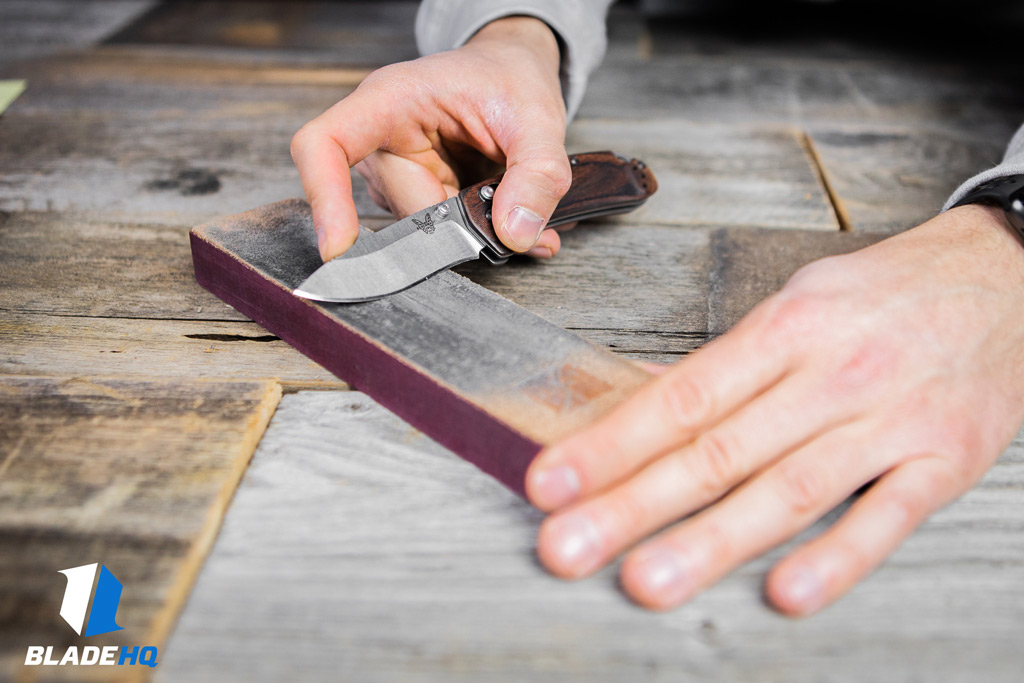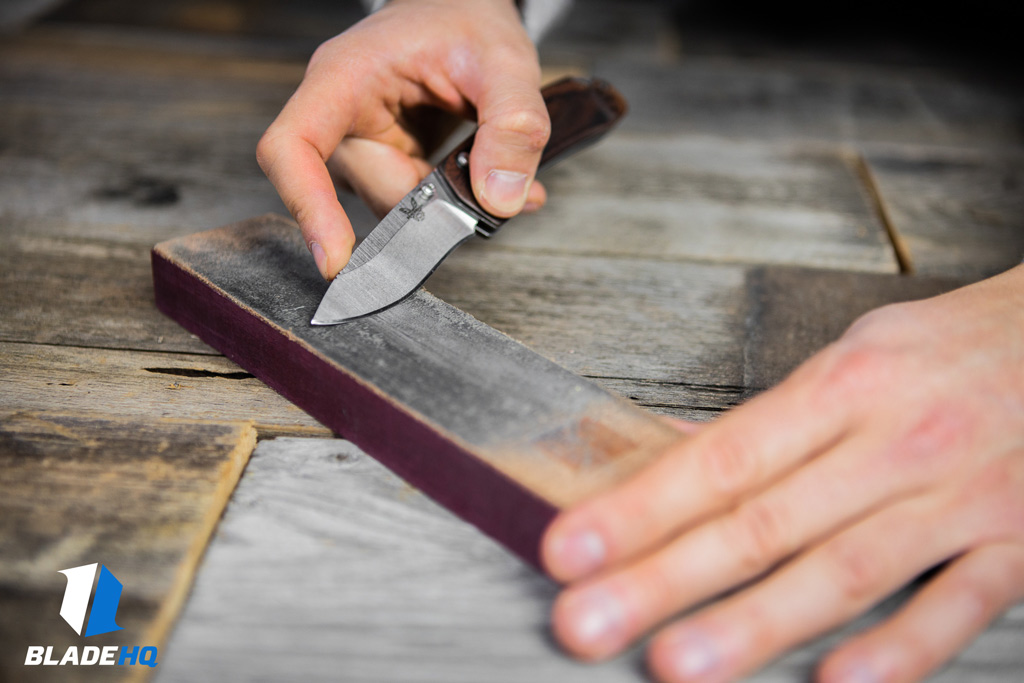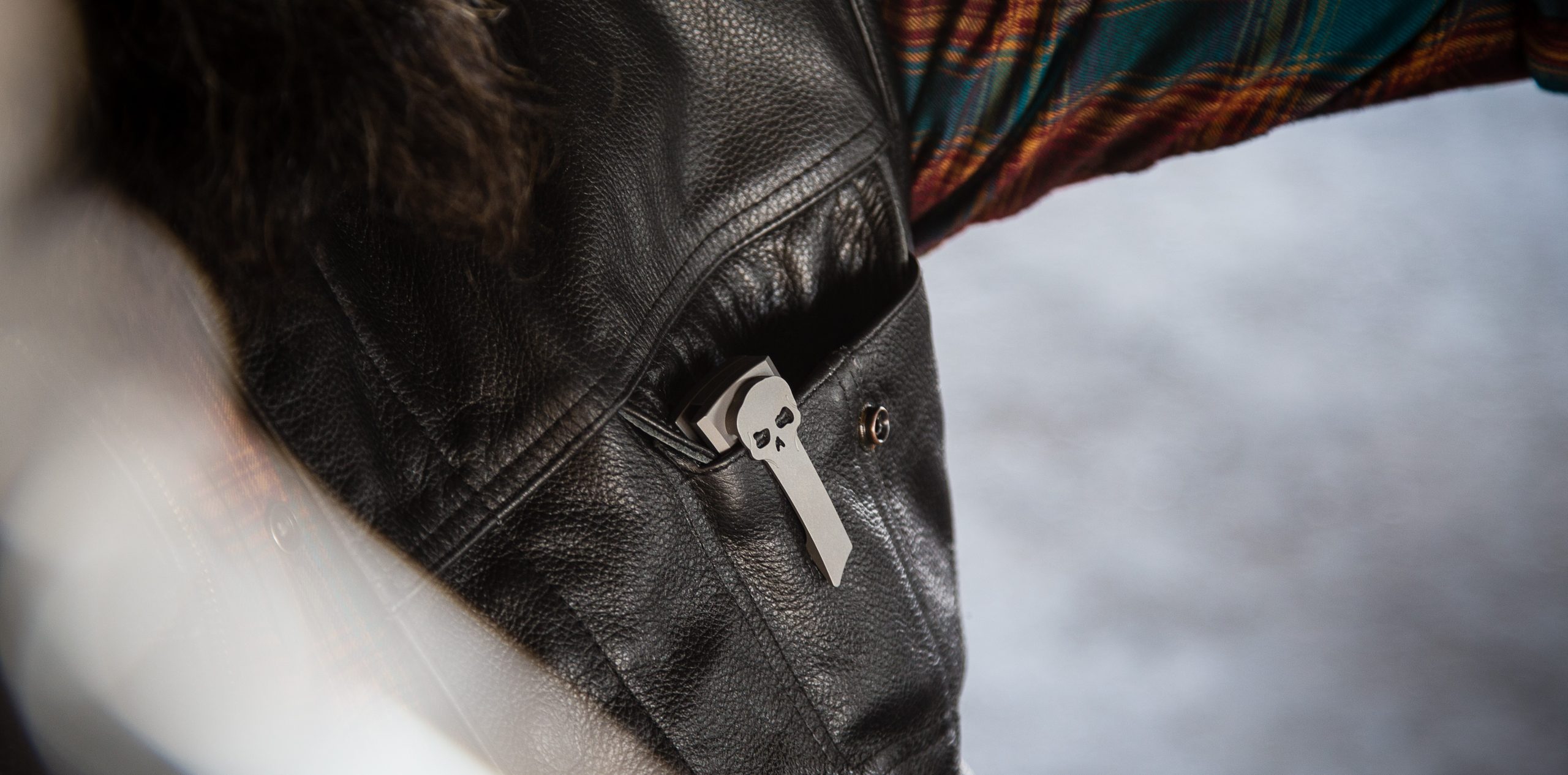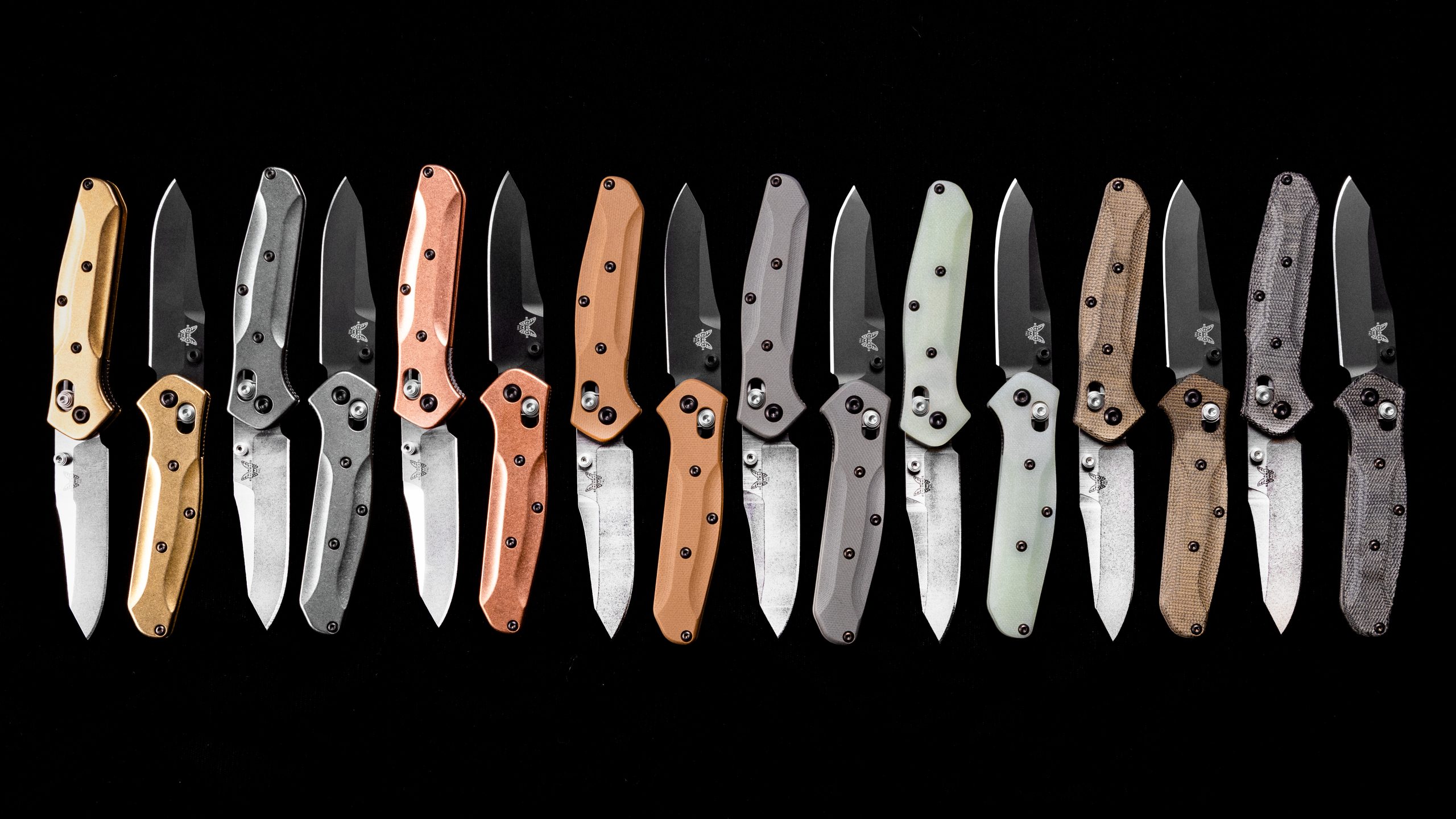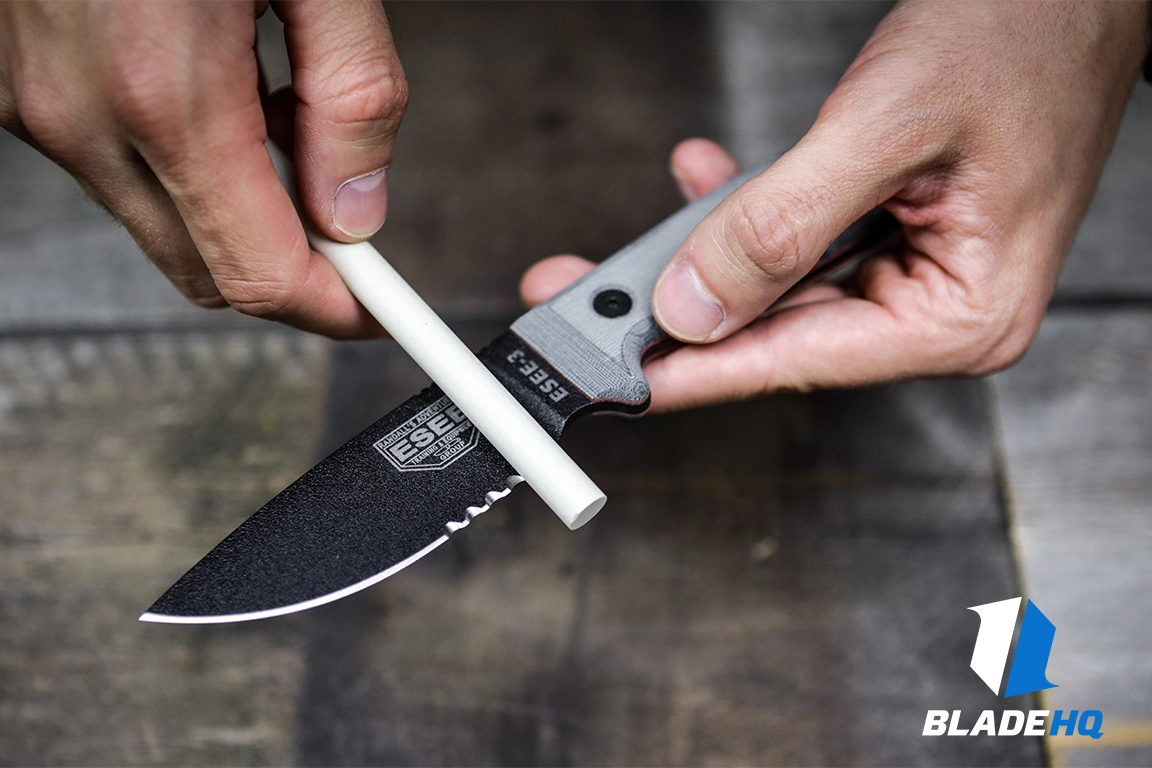
If you’re new to sharpening knives or need a crash course on how to sharpen a recurve knife, you are in the right place. Speaking in layman’s terms, sharpening a knife involves removing thin layers of steel by running the blade along a rough surface. As the grit of the rough surface becomes finer and finer, the edge of the blade becomes thinner and sharper. The concave edge in a recurve blade requires a little more attention to detail and a slightly different technique than sharpening a traditional plain edge blade, but the basic sharpening principles are the same. Read on to learn how to sharpen a recurve blade.
This article will break down sharpening a knife with a recurve blade both using a traditional ceramic sharpening rod as well as using the Spyderco Sharpmaker. The sharpening principles shown in this guide are the same whether you use a sharpening rod or a more advanced sharpening system. For reference, we used the Benchmade North Fork to demonstrate.
Tools and Supplies
This article will break down sharpening a knife with a recurve blade both using a traditional ceramic sharpening rod as well as using the Spyderco Sharpmaker. The sharpening principles shown in this guide are the same whether you use a sharpening rod or a more advanced sharpening system.
To sharpen your knife with a recurve edge, you will need:
- A sharpener with ceramic sharpening stones or a hand-held sharpening rod
- A leather strop with stropping compound
- A bevel gauge
Blade Angles
Knowing the angle your knife’s edge is ground at makes sharpening much easier and helps your knife be much safer as you use it after you sharpen it. It’s important to check the edge angle before you start sharpening; not doing so could cause damage to the knife and a reduction in performance. Before you start, pick up a Richard Kell Bevel Gauge or the Audacious Concept Dog Tag Tool for a simple way to check your angle. These tools have slots the blade can be placed in to check the edge angle. If you are struggling to find the angle these tools will surely help. As you are learning to sharpen your knife, it is important to maintain the edge angle as you are sharpening your knife. Don’t stress if you are having a tough time with this. With a practice and patience, you can be a knife sharpening pro in no time.
Using A Sharpening Rod
When sharpening a knife with a recurve style blade (like any knife) it is important to maintain consistent pressure through each sharpening stroke. Using flat stones or other similar sharpeners makes maintaining consistent pressure on the blade a challenge. Using a round or triangular sharpening rod allows one to keep consistent pressure on the edge from end to end.
Holding your sharpening rod in your non-dominant hand, place the knife with the edge facing you and the heel of the edge near the end of the sharpening rod closest to you. Angle the blade to match the bevel of the edge (between 15º and 20º). Make 5 passes on the sharpening rod from the heel of the blade to the tip of the blade pushing the knife away from your body while maintaining light, consistent pressure along the edge of the knife.
Next, flip the blade over with the edge facing away from you; also placing the heel of the knife near the end of the sharpening rod furthest from you. Find your angle and repeat the process while pulling the knife toward you along the sharpening rod making sure to maintain light, consistent pressure along the entire edge of the knife.
Repeat this process until your edge has a visibly consistent edge on both sides. You should be able to see a glint of light on it that has the same width for the length of the blade. After your knife has a consistent edge you can now move on to the strop.
Using the Spyderco Sharpmaker
If you’re using the Spyderco Sharpmaker like us, set your sharpening rods at the closest angle to the angle of your knife’s edge with the corners of the sharpening rod facing in toward each other. Depending on the condition of your edge, you may need to start with lower grit sharpening rods to remove significant damage, then use high grit rods to finish the edge. We were able to get our knife sharp by only using the high grit rods.
Now that your sharpener is set up, place the heel of your knife’s edge at the top of the sharpening rod perpendicular to the ground. Maintain this angle as you move your knife from heel to tip down the sharpening rod, alternating between each side. By using the corners of the sharpening rod instead of the flat side, you will be able to maintain better, more consistent contact with the edge and the rod. This will ensure a consistent edge is placed on the recurve.
Stropping Your Knife
At this point, your knife is likely at a point where it is fairly sharp and ready for action. The next step in the sharpening process involves polishing the edge of the knife to remove any small burrs. A leather strop and stropping compound can be used to take any minor imperfections out of the edge giving it that hair popping sharpness we all love.
To strop your knife simply apply a reasonable amount of compound to the surface of the strop, hold the knife at the same angle you sharpened it at, and make several light passes on each side of the blade. After several passes, the edge should appear smooth and have no burrs on either side.
When stropping a recurve blade, it is important to take your time and make sure to maintain even pressure on the edge for each stroke on the strop. Sharpening a knife without stropping it just isn’t the same. If you invest in a strop, your edge can stay sharper longer and generally perform better than without.
CONCLUSION
Sharpening a knife with a recurve edge is essentially the same process as sharpening any other knife. The idea is to get the edge as consistent and as thin as possible. When sharpening a recurve knife, it’s important to maintain pressure on the entire length of the edge. Using a sharpening system like the Spyderco Sharpmaker can make all the difference when sharpening a recurve knife.
Check out all our knife sharpening supplies by clicking the button below. Now that you know how to sharpen a knife with a recurve edge, check out Blade HQ’s huge selection of knife sharpeners to find the one that works for you.
Watch our guide on how to sharpen your knife using the incredibly simple Spyderco Sharpmaker.
